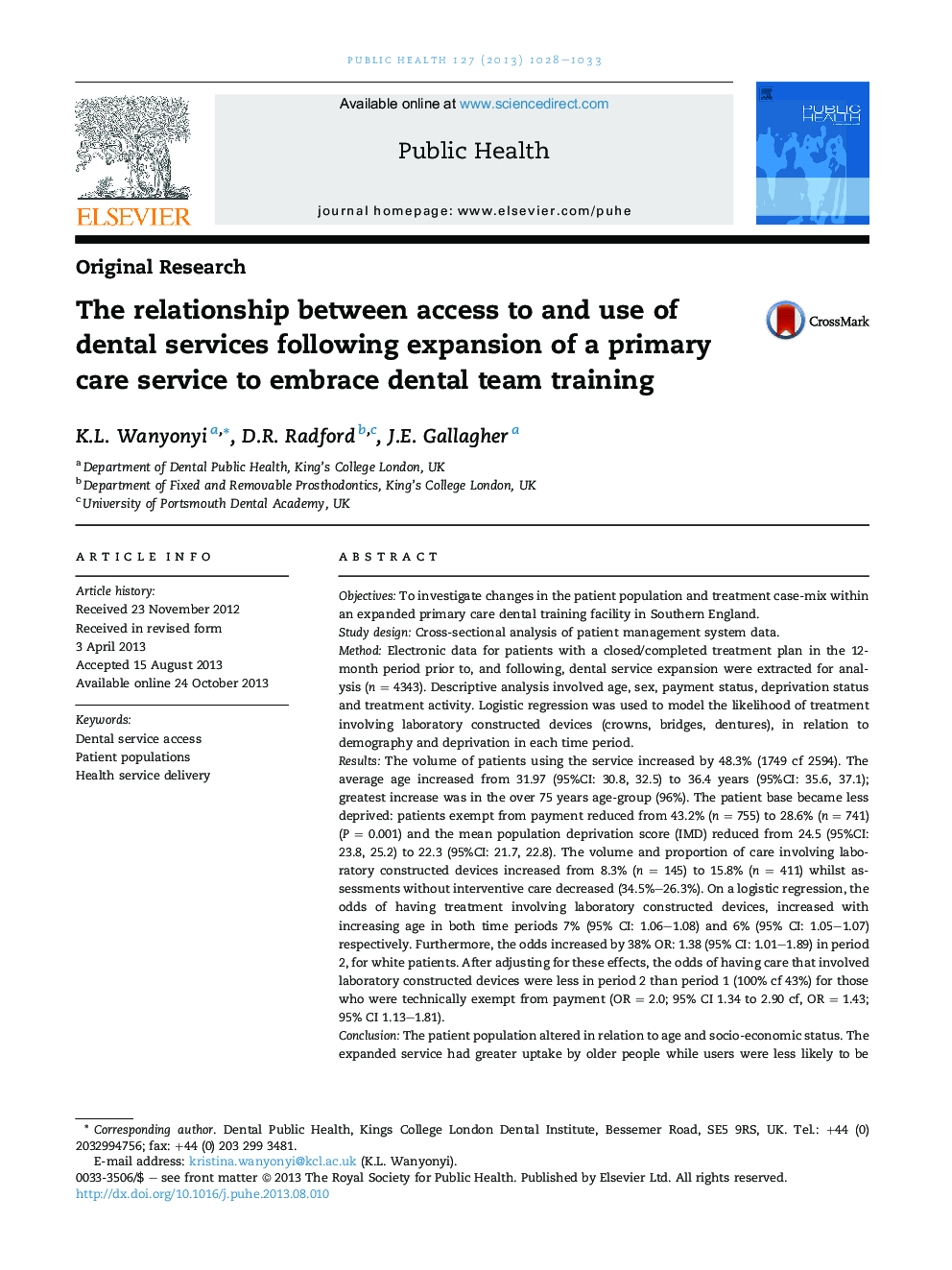| کد مقاله | کد نشریه | سال انتشار | مقاله انگلیسی | نسخه تمام متن |
|---|---|---|---|---|
| 1087500 | 951532 | 2013 | 6 صفحه PDF | دانلود رایگان |

ObjectivesTo investigate changes in the patient population and treatment case-mix within an expanded primary care dental training facility in Southern England.Study designCross-sectional analysis of patient management system data.MethodElectronic data for patients with a closed/completed treatment plan in the 12-month period prior to, and following, dental service expansion were extracted for analysis (n = 4343). Descriptive analysis involved age, sex, payment status, deprivation status and treatment activity. Logistic regression was used to model the likelihood of treatment involving laboratory constructed devices (crowns, bridges, dentures), in relation to demography and deprivation in each time period.ResultsThe volume of patients using the service increased by 48.3% (1749 cf 2594). The average age increased from 31.97 (95%CI: 30.8, 32.5) to 36.4 years (95%CI: 35.6, 37.1); greatest increase was in the over 75 years age-group (96%). The patient base became less deprived: patients exempt from payment reduced from 43.2% (n = 755) to 28.6% (n = 741) (P = 0.001) and the mean population deprivation score (IMD) reduced from 24.5 (95%CI: 23.8, 25.2) to 22.3 (95%CI: 21.7, 22.8). The volume and proportion of care involving laboratory constructed devices increased from 8.3% (n = 145) to 15.8% (n = 411) whilst assessments without interventive care decreased (34.5%–26.3%). On a logistic regression, the odds of having treatment involving laboratory constructed devices, increased with increasing age in both time periods 7% (95% CI: 1.06–1.08) and 6% (95% CI: 1.05–1.07) respectively. Furthermore, the odds increased by 38% OR: 1.38 (95% CI: 1.01–1.89) in period 2, for white patients. After adjusting for these effects, the odds of having care that involved laboratory constructed devices were less in period 2 than period 1 (100% cf 43%) for those who were technically exempt from payment (OR = 2.0; 95% CI 1.34 to 2.90 cf, OR = 1.43; 95% CI 1.13–1.81).ConclusionThe patient population altered in relation to age and socio-economic status. The expanded service had greater uptake by older people while users were less likely to be deprived. The expanded service, free at the point of delivery, attracted a higher proportion of patients who would normally have to pay health service charges. The service also showed an increase in treatment case-mix that involved laboratory constructed dental devices.
Journal: Public Health - Volume 127, Issue 11, November 2013, Pages 1028–1033